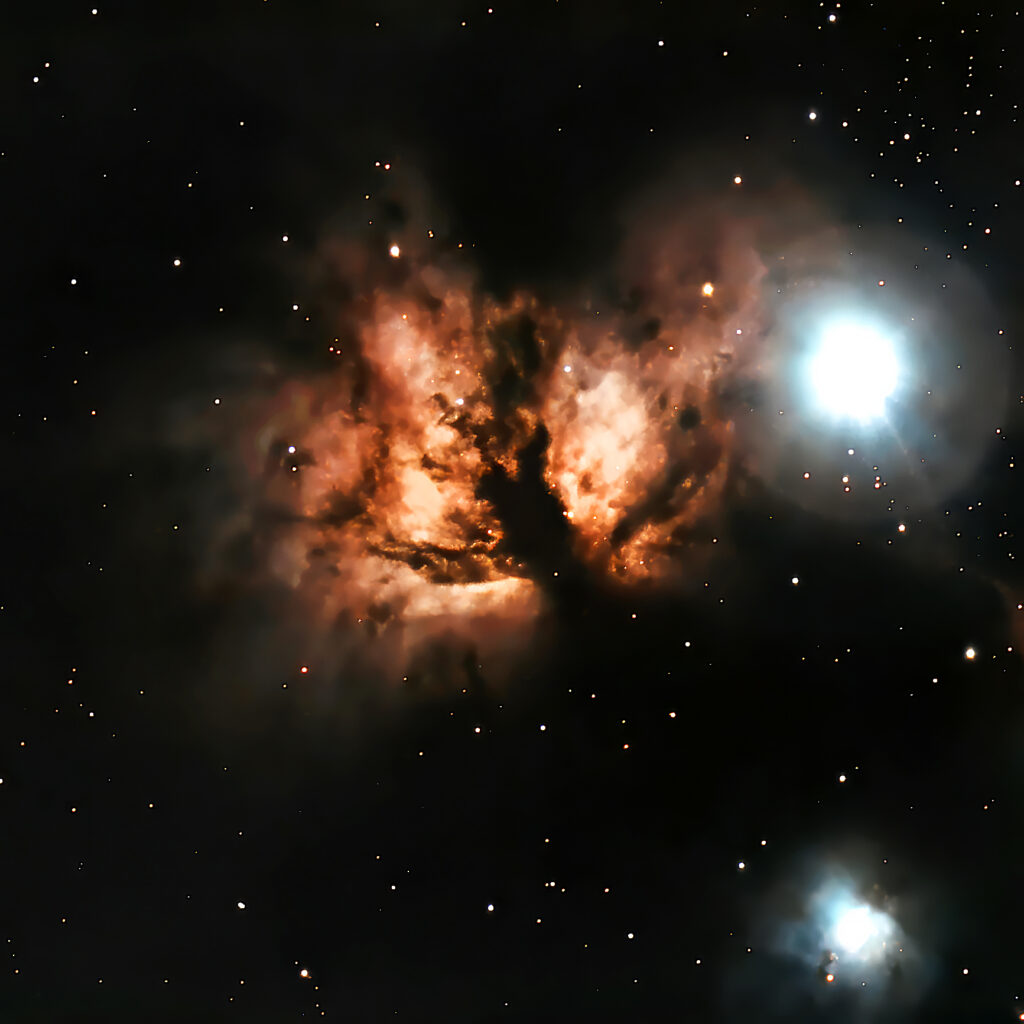
Figure 1 – NGC 2024 The Flame Nebula, Celestron Origin, 60 min 360 frame exposure, (c)DEWolf 2025
We last spoke about M42, the Great Nebula in Orion. M42 is one of the Orion Molecular Cloud Complex of nebulae. There also lies the equally spectacular Flame Nebula or NGC 2024. NGC 2024, is approximately 1,400 light-years away from Earth. I took Figure 1 of NGC 2024 with my Celestron Origin 60 min 360 10 sec exposures.
At first glance, the Flame Nebula resembles a billowing, fiery structure, with streaks of red, orange, and blue interspersed throughout its cloud-like formations. This fiery appearance is due to the nebula’s ionized hydrogen gas, which glows vividly when illuminated by the ultraviolet light emitted by nearby hot, young stars. Within its dense molecular clouds, the conditions are perfect for the birth of new stars. The nebula’s energetic environment is driven by the radiation from young, hot stars, which heats up the surrounding gas and dust, causing it to ionize and emit light.
One of the most prominent features of NGC 2024 is the presence of the star HD 38563, a massive, young O-type star that lies at the center of the nebula. This star is responsible for much of the illumination of the surrounding gas, making it a key player in shaping the nebula’s appearance. The intense radiation from HD 38563 also causes the surrounding material to be pushed away, carving out the gaps and caverns in the nebula’s structure.
In addition to HD 38563, there are numerous smaller stars in the region that are still in the process of formation. These stars are hidden deep within the nebula’s dense gas clouds, making them difficult to observe directly in visible light. However, infrared observations have allowed astronomers to peer through the thick dust and uncover many of these young stellar objects.he Flame Nebula offers a glimpse into one of the most fundamental processes of the universe: the birth of stars. Star-forming regions like the Flame Nebula play a critical role in the evolution of galaxies, as the formation of new stars is closely tied to the development of the galactic structure. These regions also provide astronomers with valuable data about the early stages of star formation and the processes that shape stellar systems.
In response to my post about M42, the Great Orion Nebula, a reader asked what the ancients thought about M42. Certainly, they could easily make out this mag. 4.0 “fuzzy star.” Of course, they had no understanding of what they were as nebulae.However, specific mention of M42 in the archaic literature is sparse.
Before talking about myths, I have to add the caveat that when it comes to myths about stars and constellations I always wonder if they were believe or merely though of as pleasant stories and mnemonics for remembering the patterns. I have only to gaze upon Perseus and Andromeda to recall her rescue from Cetus the sea monster, while her parents Cassiopeia and Cepheus waited terrified on shore
On the other hand, the stars have always held deep meaning for human cultures. They have guided travelers, inspired myths, and ignited our curiosity about the cosmos. For the Meso-American Mayan civilization, a civilization renowned for its advanced knowledge of the night sky, the stars were not just points of light—they were part of intricate stories and cosmic cycles. And Messier 42 connects deeply with the Mayan Hearth Myth.
In the Mayan creation myth, the hearthstones were sacred objects placed at the center of a home. The hearth symbolized the core of the household, where fire, warmth, and sustenance were kept alive. The hearthstones also held great spiritual importance, representing the foundation of life, energy, and balance. These mythological hearthstones were believed to be the heart of the universe, where life and creation originated.
In the Mayan Zeitgeist, the Orion constellation symbolized not just the hearthstones of creation but also the vital energy and cosmic fire that fueled the universe. The stars of Orion, including the bright supergiant Betelgeuse and the star cluster surrounding the Orion Nebula (M42), were seen as representations of these sacred hearths. Messier 42 was the very flame of the hearth.
The fire is the very site of creation. And perhaps this belies a deeper understanding for such indeed, as a stellar nursery is what M42 is in fact. Just as a hearth in Mayan homes was the source of warmth and life, the nebula could be seen as a cosmic hearth that generates the very building blocks of stars and life across the galaxy.
So I think it not unlikely that the Mayan believed M42 to truly be the universe’s flame. As always I turn in the end to Shakespeare to support the view of stars as fires. After all it is just past Saint Valentine’s day. So for TC:
“Doubt thou the stars are fire, Doubt that the sun doth move, Doubt truth to be a liar, But never doubt I love”
William Shakespeare, Hamlet
